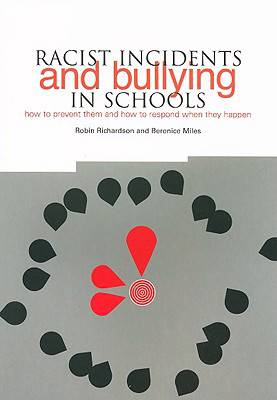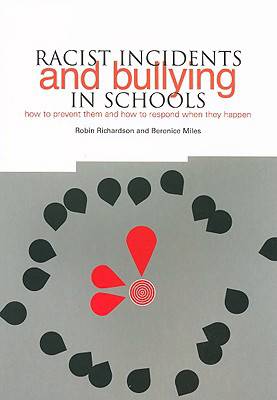
- Afhalen na 1 uur in een winkel met voorraad
- Gratis thuislevering in België vanaf € 30
- Ruim aanbod met 7 miljoen producten
- Afhalen na 1 uur in een winkel met voorraad
- Gratis thuislevering in België vanaf € 30
- Ruim aanbod met 7 miljoen producten
Zoeken
Racist Incidents and Bullying in Schools
How to Prevent Them and How to Respond When They Happen
Robin Richardson, Berenice Miles
Paperback | Engels
€ 27,95
+ 55 punten
Omschrijving
All schools recognize they have an ethical and legal responsibility to prevent bullying regarding racism, culture and religion, and to deal robustly and sensitively with incidents that occur. But there are complex practical and theoretical questions.
* What are the differences between racist bullying and other forms of bullying?
* How do we educate children and young people to see that racism and cultural prejudices are damaging even when no offence is intended or taken?
* How do we ensure the recording and reporting of racist incidents is of positive value, not just a bureaucratic chore?
* How do we ensure that our efforts are not counter-productive?
* What are the implications for the curriculum and for school organization and ethos?
This book handles such questions by describing a range of recent projects and initiatives at national, local and institutional levels. It will be invaluable to policy makers, managers and teachers in primary and secondary schools, and to officers and school improvement partners in local authorities.
* What are the differences between racist bullying and other forms of bullying?
* How do we educate children and young people to see that racism and cultural prejudices are damaging even when no offence is intended or taken?
* How do we ensure the recording and reporting of racist incidents is of positive value, not just a bureaucratic chore?
* How do we ensure that our efforts are not counter-productive?
* What are the implications for the curriculum and for school organization and ethos?
This book handles such questions by describing a range of recent projects and initiatives at national, local and institutional levels. It will be invaluable to policy makers, managers and teachers in primary and secondary schools, and to officers and school improvement partners in local authorities.
Specificaties
Betrokkenen
- Auteur(s):
- Uitgeverij:
Inhoud
- Aantal bladzijden:
- 148
- Taal:
- Engels
Eigenschappen
- Productcode (EAN):
- 9781858564289
- Verschijningsdatum:
- 10/11/2008
- Uitvoering:
- Paperback
- Formaat:
- Trade paperback (VS)
- Afmetingen:
- 168 mm x 236 mm
- Gewicht:
- 294 g

Alleen bij Standaard Boekhandel
+ 55 punten op je klantenkaart van Standaard Boekhandel
Beoordelingen
We publiceren alleen reviews die voldoen aan de voorwaarden voor reviews. Bekijk onze voorwaarden voor reviews.











